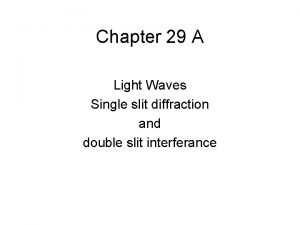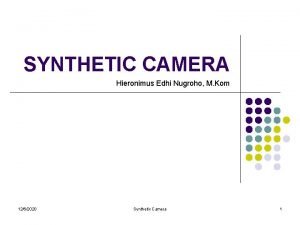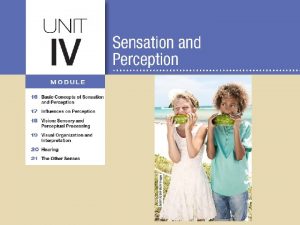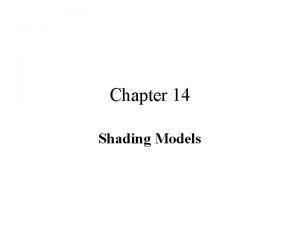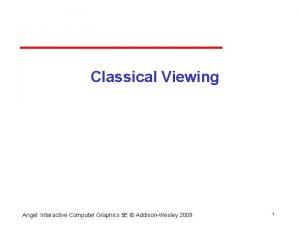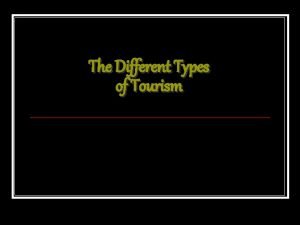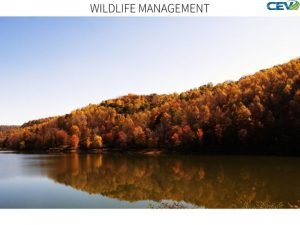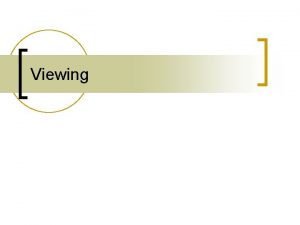Desert tourism Characteristics of Desert tourism Wildlife Viewing





























- Slides: 29

Desert tourism

Characteristics of Desert tourism


Wildlife Viewing Desert Caves and Caving Nile cruises Sea activities.


Case Study: Dubai

Case Study: Dubai Climate: -Annual rainfall~130 mm -Lowest annual mean temperature: 10 o. C -Highest annual mean temperature: 48 o. C *Subtropical Arid Climate 廿一世紀杜拜風情

Tourism in Dubai: Major activities 1. CAMPING DESERT SAFARI 2. DESERT SAFARI 3. - dune driving, wadi-Bashing, sand skiing - see the Bedouin(kind of Nomadic Herders) settlements - Camel Racing - Falconry - Photographic opportunities- elegant mosques, sumptuous palaces, majestic camels, ancient windtowers, dusty villages and dramatic sunsets 3. …… Shopping Case Study: Dubai

CAMPING DESERT SAFARI Case Study: Dubai

dune driving, wadi-Bashing, sand skiing Case Study: Dubai

see the Bedouin (a kind of Nomadic Herders) settlements Case Study: Dubai

Camel Racing Case Study: Dubai

Falconry Case Study: Dubai

Photographic opportunities Little. Green Cream. Courser Crab. Plover Hypocolius Chestnut Sandgrouse White. Kingfisher Case Study: Dubai

Others Museum Horse Racing Ice Skiing Case Study: Dubai

Egypt Arab Republic of Egypt rainfall averages : only around 2 to 5 mm (0. 1 to 0. 2 in) per year and at intervals of many years. Temperatures average : between 80 °F (27 °C) and 90 °F (32 °C) in summer, and up to 109 °F (43 °C) on the Red Sea coast. Temperatures average between 55 °F (13 °C) and 70 °F (21 °C) in winter. Location : The majority of Egypt's landscape is a sandy desert.

Tourism in Egypt offers a wide choice of activities, Make use the Sahara desert as the selling point。 觀光 沙漠露營 黃昏時騎駱駝觀賞大漠落 到軟丘上滑沙 觀察沙漠及綠洲生態; 在沙漠中打高爾夫球; 到綠洲泡澡……

a moving sand dune Natural鹽灘 Oasis in Sahara desert

Although the construction of the pyramids was only an episode in the long history of the pharaohs, this period has left us some of the most impressive monuments that can be seen. Besides the three giants of Gizeh, more than 70 pyramids can be counted along the Nile. Which is the famous tourist spots there.

Nature and wildlife From wide stretches of desert to the fertile banks of the Nile, Egyptian landscapes are a wide palette of discoveries just waiting to be explored. On foot, by camel or 4 x 4, hikes and safaris take you on a voyage of discovery of an astonishing environment, bursting with life.

Impact brought from tourism to desert Many jobs opportunities are generated by the tourism activities.


Desert art in danger at Egypt's new tourism frontier Posted on Thursday, November 22, 2007 (EST) A rising tide of travellers seeking out the new frontier of Egyptian tourism is threatening priceless rock art preserved for millennia in one of the most-isolated reaches of the Sahara. A recent engraving of a female figure defacing the world's most westernmost example of ancient hieroglyphics

CAIRO (AFP) - In Egypt's southwest corner, straddling the borders of Sudan and Libya, the elegant paintings of prehistoric man and beast in the mountains of Gilf Kabir and Jebel Ouenat are as stunning in their simplicity as anything by Picasso. But lying 500 kilometres (330 miles) from the nearest habitation, the desert offers little sanctuary for these masterpieces and any effective protected designation first requires a deal between the three sometimes quarrelsome nations. Not only the rock art is at stake, but the region's entire cultural and natural heritage. "You can't estimate the amount of damage done, " says Dr Rudolph Kuper, a German archaeologist involved in trying to protect the art, mostly dating from when the desert was a receding prairie 5, 000 -7, 000 years ago. "People put water or oil on the paintings to make the faded colours look brighter, causing irreparable damage, " he says. The story is even more tragic just across the border in Libya, where the delicate brush strokes of human figures at Ain Dua appear to have been shot at by bored soldiers. Nearby, a painted cave is filled with rubbish while outside a giant portrait of Bob Marley shimmers garishly in the white of the desert. Paying up to 10, 000 dollars for a two-week expedition, travellers drive through the desert to reach Gilf Kabir, site of the Cave of the Swimmers made famous by the 1996 film "The English Patient. " While only a handful came here in the 1980 s, the numbers have been rising steadily through the 1990 s as some of the millions of tourists visiting Egypt seek out something more exotic than the sandy beach of a Red Sea resort. "By 2006 there were probably 800 people coming and this year we expect more than 1, 000, " says Kuper. Rock art specialist Tilman Lenssen-Erz says that in prehistoric times the sites would have been known for thousands of square kilometres (miles). "This was a place so highly charged with symbolism and with the world views that were fixed there in the rock art that it would have been like a huge cathedral in a European context, " says Lenssen-Erz. "People from far away would know about the significance of the religious power that is collected in this place. . . where the supernatural powers of the world were fixed on rocks making the whole area a sacred landscape. " Even more recent artefacts like the world's westernmost example of ancient hieroglyphics known as Meri's rock, to the northeast of Gilf Kabir, have not gone unscathed by the passage of modern man. The hieroglyphs are evidence that, contrary to the idea that pharaonic trade with sub-Saharan Africa only went via the Nile Valley, the ancients had a major trading route cutting straight through the desert. Last year, someone embellished the ancient writings with a giant engraving of a topless woman.

"You can't put barbed wire around it so we developed the idea of mental fences, " Kuper says of the importance of educating guides and tourists alike. Saad Ali, a young tour operator based in the oasis of Farafra who also runs the Farafra Development Institution NGO, also realised that the only long-term solution was through education. "We always arranged trips to clean up the desert and every year we found more rubbish so we found the solution is to train the guides, " he says. "Now it's changed a lot. Last year we went to clean up and we collected only 4. 5 tonnes of rubbish while the year before it was 11 tonnes. " His next target is tour operators working out of Cairo, still largely unaware of the damage they wreak. Kuper says that such programmes help to manage "70 -80 percent of people" but that others -- tourists still living with a colonial mentality and Cairo-based expats who take away artefacts in their 4 x 4 s -- are difficult to control. With untold damage already wrought, getting Egypt, Libya and Sudan to agree on policing the militarily sensitive area is a conservation conundrum. The hope is to have the area designated as a trans-boundary cultural landscape UNESCO World Heritage site, but that requires the three nations to all first declare individual national parks. So far, only Egypt has designated a park, but officials from all three countries are due to meet in Cairo in December in the hope of hammering out a deal, despite their occasionally fraught diplomatic relations. With the support of the Supreme Council of Antiquities, Kuper and Prof Mustafa Fouda from the Egyptian Environmental Affairs Agency want to build a museum-cum-educational centre in the oasis of Dakhla, the jumping off point for most trips to Gilf Kabir. "Hopefully we can make our dreams come true, with a museum to explain the relationship between man and the desert, to explain how man can make use of the resources in a sustainable way, " says Fouda. Pending the politicians' decision, Kuper says that recently some tourists have returned to the Cave of the Swimmers to try to erase their names. For the desert's desecraters, it seems the writing is on the wall.


United Nations Environment Programme (UNEP)


 The soldier decided to desert his dessert in the desert
The soldier decided to desert his dessert in the desert Examples of value claims
Examples of value claims Section view
Section view Wide reading critical film viewing
Wide reading critical film viewing Eccentric viewing techniques occupational therapy
Eccentric viewing techniques occupational therapy Slit diffraction
Slit diffraction Thank you for viewing my presentation
Thank you for viewing my presentation Steps in viewing
Steps in viewing Konsep viewing 3d adalah
Konsep viewing 3d adalah Viewing transformation pipeline
Viewing transformation pipeline Viewing coordinate sering juga disebut
Viewing coordinate sering juga disebut Bryanna and charles are in a dancing competition
Bryanna and charles are in a dancing competition Constant intensity shading
Constant intensity shading Define viewing in computer graphics
Define viewing in computer graphics Computer graphics chapter 1 ppt
Computer graphics chapter 1 ppt In two dimensional viewing system have
In two dimensional viewing system have Two dimensional viewing
Two dimensional viewing While viewing a slide of rapidly moving sperm cells
While viewing a slide of rapidly moving sperm cells Managing risk with the ipde process
Managing risk with the ipde process Viewing angel
Viewing angel Mass tourism vs alternative tourism
Mass tourism vs alternative tourism Manipulative management wildlife
Manipulative management wildlife Adirondack wildlife refuge and rehab center
Adirondack wildlife refuge and rehab center Mario cea sanchez
Mario cea sanchez Objectives of wildlife management
Objectives of wildlife management Vegetation in karnataka
Vegetation in karnataka Animal depletion
Animal depletion Wildlife topics for presentation
Wildlife topics for presentation Basic requirements of wildlife
Basic requirements of wildlife Shillapoo wildlife area
Shillapoo wildlife area





